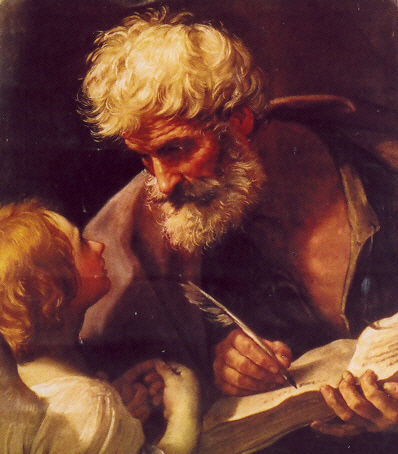
Matthew 17:1-9
Lenten Transfiguration by Rev.
Jerome A. Magat
Home Page
To Sunday Gospel Reflections Index
Matthew wrote to show that Christ
was the
Messiah and fulfilled the Jewish prophecies.

Jesus took Peter, James, and John his brother, and led them up a high mountain by themselves. And he was transfigured before them; his face shone like the sun and his clothes became white as light. And behold, Moses and Elijah appeared to them, conversing with him. Then Peter said to Jesus in reply, "Lord, it is good that we are here. If you wish, I will make three tents here, one for you, one for Moses, and one for Elijah." While he was still speaking, behold, a bright cloud cast a shadow over them, then from the cloud came a voice that said, "This is my beloved Son, with whom I am well pleased; listen to him." When the disciples heard this, they fell prostrate and were very much afraid. But Jesus came and touched them, saying, "Rise, and do not be afraid." And when the disciples raised their eyes, they saw no one else but Jesus alone.
As they were coming down from the mountain, Jesus charged them, "Do not tell the vision to anyone until the Son of Man has been raised from the dead."
The event of the Transfiguration is recorded in the Gospels of Sts. Matthew, Mark and Luke. Interestingly, none of the aforementioned evangelists were eyewitnesses to the event. St. John, the only evangelist who was present at the Transfiguration, did not mention the event in his Gospel, perhaps already aware that the other evangelists had recorded it prior to the composition of the last Gospel.
Traditionally, this moment in biblical history has been understood as Jesus' pledge of future glory to His Twelve Apostles so that when the events of the Passion occurred, they might take consolation in having seen a glimpse of the glorified Christ, even before the actual Resurrection transpired. In other words, the Transfiguration was a gift to Peter, James and John as a way of shoring up their faith when they would soon witness Our Lord's brutal death.
There is another dimension to the Transfiguration worth considering, especially as it relates to our 40-day observance of the Lenten season. The second Sunday of Lent always features the event of the Transfiguration as the Gospel reading. The word "transfiguration" means to "change form," indicative of what the three apostles witnessed in Christ on Mount Tabor. Similarly, our Lenten observance challenges us to become transfigured through repentance and conversion. The three traditional works of Lent (fasting, penance and prayer) provide the backdrop for this to occur within us.
At the moment of the Transfiguration, Jesus revealed His divinity to Sts. Peter, James and John. This revelation overtook them and they were overwhelmed with wonder. In a similar way, baptism has impressed a unique character upon each of us, such that our souls contain a spark of the divine. The immortality of the human soul, coupled with the indwelling of the Trinity provides the baptized person with a unique dignity. The work of a lifetime of a believer is to steadily transfigure his life to be in conformity with the Lord, the giver of all life. Lent is precisely that specialized time of year to focus on allowing the spark of the divine to shine forth from within us and to obscure the darkness of our sins and failings. It is no wonder that the Rite of Christian Initiation of Adults mirrors this transformation that is occurring in the lives of all those preparing for baptism and the other sacraments of initiation at Easter.
Just three days after Calvary, Peter, James and John, along with the other apostles, would encounter the risen Christ in the upper room. The three apostles who witnessed the Transfiguration would have recognized Jesus in some similar appearance when they saw Him in that upper room, almost reminiscent of what they saw on Mount Tabor. These moments of glory - the Transfiguration and the Resurrection - are bookends to the suffering and death of Jesus on the Cross. The same is true for all of us. Before we can enjoy the glory of the Resurrection, we must all pass through the crucible of suffering that each of us carries in our individual daily crosses. It is the purification associated with this suffering that allows us to be transfigured into the saints we were called to be when the Trinity made its indwelling within us at baptism. We do well to pray that the fruits of the Lenten season are born within us so that real transfiguration may occur within.
Please consider a tax deductible gift to support this web site.